Thatched Roofs
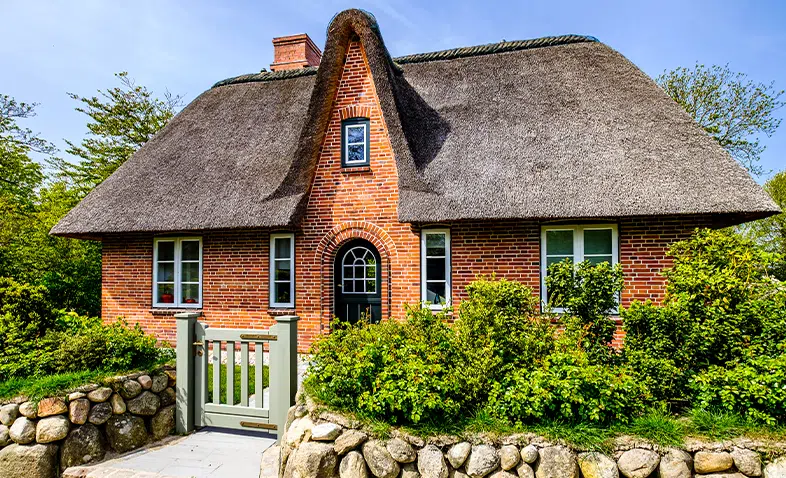
The very first roofs in the British Isles were thatch roofs that date back as far as, circa 700 AD. The roofs are made with dry vegetation using anything from wild grass and straw to water reeds, rushes and heather. They are assembled by way of a gradual layering of the selected materials so as to make a roof covering that both insulates the building and is thick enough to keep any moisture from the natural elements, at bay.
The London ordinance of 1212 prohibited the use of thatch on new buildings in the capital, suggesting that shingles, slates, stone or tiles should be used as an alternative. The uptake of this regulation was slow, especially in other towns. After the Great Fire of London in 1666, the use of thatched roofs began to decline. Although thatching is now primarily used to preserve historical buildings across the British Isles, many developing countries around the world continue to use thatched roofs.
Wood Shingles
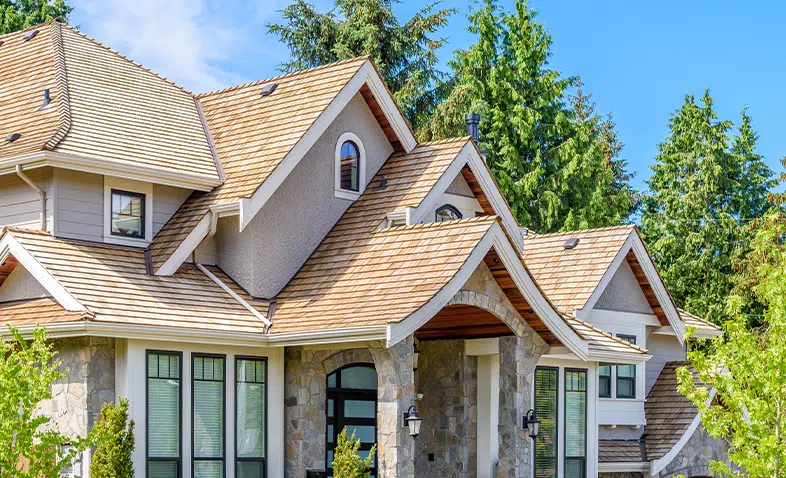
Wood shingles are said to have first been used in the UK some three hundred years or so after thatching, thus circa 1000 AD. In the British Isles, wood shingles would be made from trees sourced in the local area. Traditionally, wood shingles varied in length with a thin density and narrow width. These were carved from straight-grained knot free sections of the logs and cut to the required length. As a result of being hand split, the shingles split surface had to be planed or dressed in order to make them smooth enough to fit evenly onto the roof.
Wood shingle roofs became very fashionable amongst the landed gentry during the 14th and 15th centuries however, after the industrial revolution with steam-powered sawmills making it possible to produce mass quantities of uniform shingles, eliminating the need for the split shingle to be smoothed by hand. With the ability to manufacture on mass correlated with the fact that new forms of transportation enabled the wood shingles to be bought more cheaply and delivered to a much wider sector of the UK, wood shingle roofs became ever more popular.
Slate Tiles
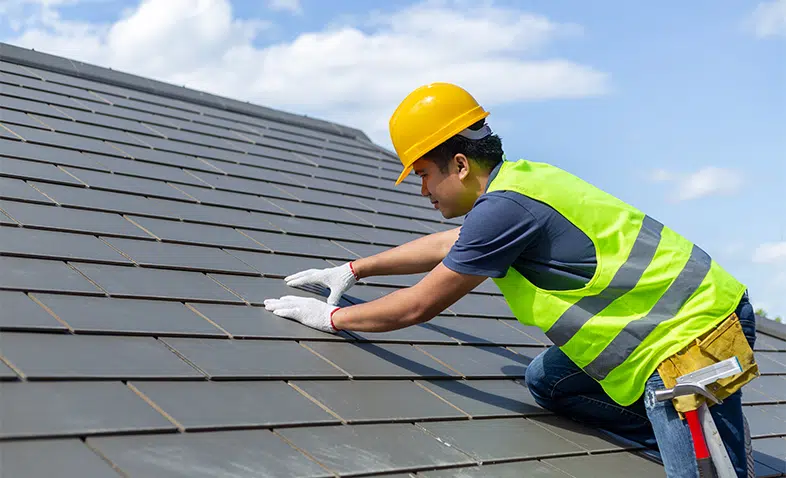
Prized for its robustness and aesthetic appeal, slate has been used to build forts, abbeys and castles since the Romans invaded Wales in 48 AD. Slate was expensive due to the laborious process of digging it from quarries with hand tools. It was also very heavy and difficult to transport and was therefore only used by the most affluent bodies and aristocratic individuals in areas close to the quarries.
The invention of the steam-powered locomotive and other machinery at the turn of the 19th century coupled with new techniques the Spanish had developed for the efficient quarrying of slate, thus making it more affordable for the general population, paved the way for a boom in slate roofing during Britain’s Victorian era.
During the early part of the 20th century, new, much cheaper, synthetic alternatives such as asbestos, clay and concrete began to emerge onto the marketplace and the use of slate began to dwindle. However, during the latter part of the 1900s, due to its durability, the use of slate has once again become more fashionable.
Today, slate imitation tiles made of composite material such as plastics and fibres are used as an alternative to natural slate tiles. These tiles are much of a likeness in appearance but are far lighter in weight and usually a cheaper option. Another available alternative is a solar-powered imitation slate tile, this serves two purposes, the first is insulation and the second is the provision of efficient energy.
Clay Tiles
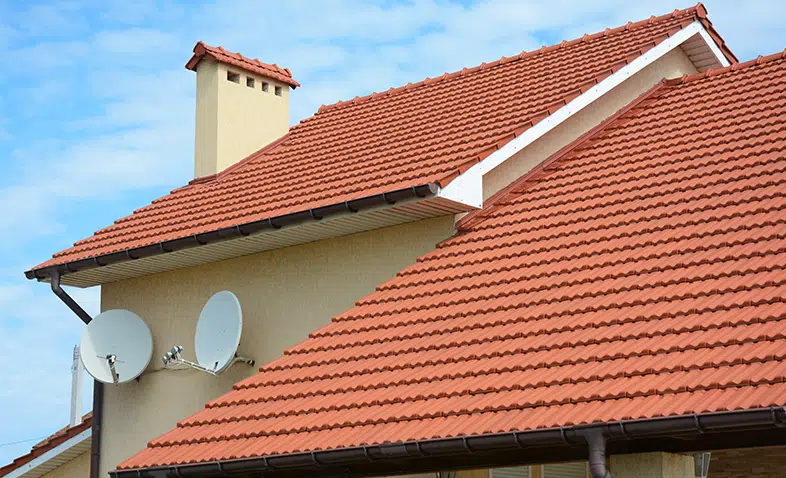
The Romans in circa 100BC; introduced clay tiles into Britain by showing the locals how to gather clay soil from regional rivers, moulding it into a tile and bake it in a kiln oven. As they were heavy to transport, like the other materials mentioned above, it was not until after the industrial revolution that clay tiles became a popular choice across the British Isles.
Clay tiles were used far more after the great fire of London in 1666 and continued to be used until the 1930’s when the prevalent use of concrete tiles due to the dangers related to the emerging world war their production.
Clay tiles are prone to frost damage, leakage and warping and thus have a much shorter lifecycle than slate tiles. Though, as a result of their cost efficiency, ease of installation, differing imitative looks and colours, they remain a popular choice. Today clay tiles are generally imported from many countries whose knack to produce a far better quality of clay tile has seen a decline in the sale and use of British manufactured clay tiles.
Concrete Tiles
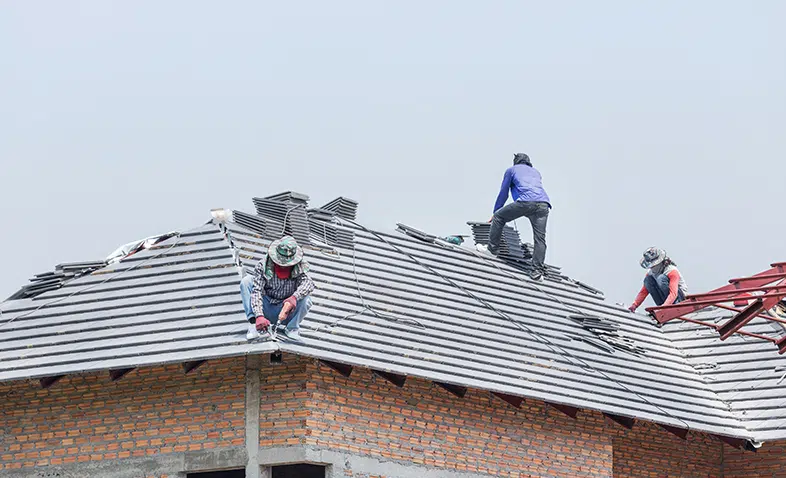
Concrete tiles were first introduced in the British Isles during the early part of the 20th century and are still a popular choice for roof coverings today as they are robust; much easier and cheaper to produce, can imitate different types of tiles and come in a number of colours and finishes.
Although concrete tiles are watertight and durable to the elements, they are not only considered to be environmentally unfriendly but are so heavy that they can lead to serious structural damage in period properties.
Icon Surveyors would advise anyone who is planning to change their roof covering, to consider all of the options available to them as the wrong choice could not only lead to structural damage but may prove to be far more costly in the long term.